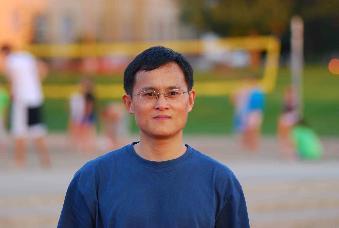
Gao Xianlong
professor Supervisor of Doctorate Candidates Supervisor of Master's Candidates
Honors and Titles : Program for New Century Excellent Talents in University
Gender : Male
Alma Mater : University of Science and Technology of China
Education Level : Graduate student graduate
Degree : Doctorate
Status : 在岗
School/Department : College of Mathematics, Physics and Information Engineering
Date of Employment : 2007-03-29
Discipline : physics
Business Address : Science Building 29#-429
Contact Information : 0579-82298507, 667810(short)
Email :
Hits :
Affiliation of Author(s): 数理与信息工程学院
Date of Publication : 2000-01-01
Document Type : 期刊
Journal : 中国科学技术大学学报
Volume: 第30卷
Issue : 第5期
Page Number : 51-57
ISSN : 0253-2778
Translation or Not : no
Key Words : 费米相干态;安德逊模型;单位格点基态能;半充满
Abstract : 利用费米相干态方法, 解析地推导了带有两个杂质的安德逊系统在具有奇数或偶数个电子情况下的基态能公式, 比较了它们的差别,并且利用费米相干态方法在处理多体问题上的方便性,定量地研究了单位格点的平均电子数为半充满或半充满以下时的基态能情况.
Born at Anhui Province, Feixi, Ph.D., Professor,
In 1998, Anhui University Department of Applied Physics, Theoretical Physics, Bachelor, Master,
In 2001, University of Science and Technology of China, Department of Astronomy and Applied Physics, Condensed matter physics, Ph.D
Research Interests:
1. Quantum properties of low-dimensional Fermi gas: Studying the exotic quantum phases due to the fermion species, pairing, the external potential, and the interaction;
2. Density functional theory of low-dimensioanl system;
Homogeneous low-dimensional systems are strictly solvable in many cases (eg using the Bethe-Ansatz technique, Bosonization, etc.), and for the inhomogeneous systems they are more complicated and can often be solved by using density functional theory. We study the applications of the density functional theory in the model system. Related examples can be found in the application of density functional theory in the inhomogeneous Hubbard model, non-uniform Lieb-Wu model, Anderson model and Bose-Fermi mixed system. The same idea can be used to deal with disordered problems, finite temperature effects, various dynamical problems;
3. Numerical study of low-dimensional strong correlation system: By means of strict diagonalization and numerical renormalization group, we discuss the ground state, especially the correlation function of low-dimensional systems;
4. Excitation properties of low-dimensional strongly correlation systems: studying low energy excitation such as spin-charge separation phenomenon, spin-drag effect due to the relative motion of different types of fermions, and the use of variational methods and local density approximation to solve the finite temperature, low energy excitation mode.
For students:
I am currently tutoring several graduate students for scientific research. At the same time, I am organizing and supervising a number of junior undergraduates for research and develop their research interests.
See details at http://physics.zjnu.edu.cn/2016/0303/c2480a26226/page.htm
Research team http://course.zjnu.cn/qm/gao/